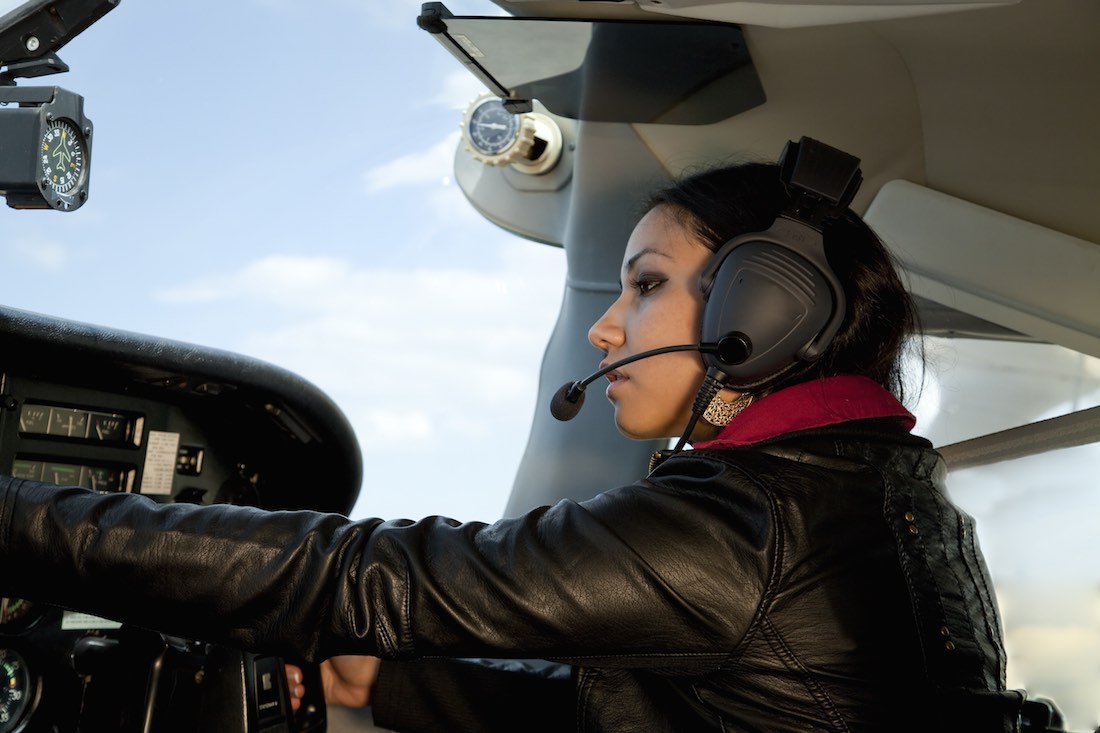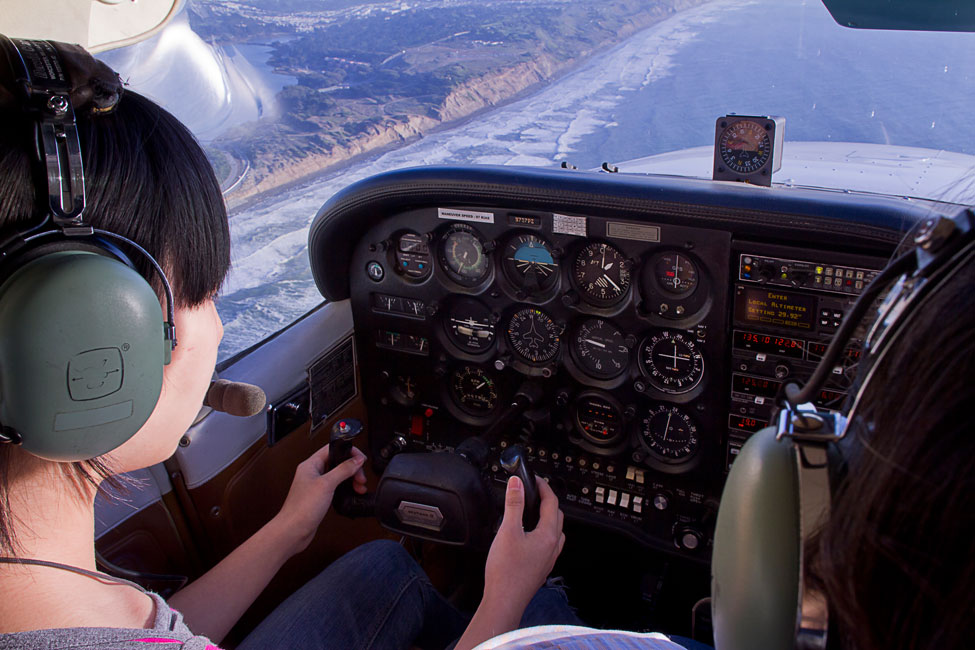Aviation desperately needs flight instructors who are willing to nest for awhile.
It was early in the morning when a baby sparrow nested in the tree outside our picture window decided to take its first flight. Leaping from the nest it flew directly into the glass.
Smack! Thump!
Concerned for the little guy, my wife and I ran to the window. As we stood there looking at the little fellow, I thought, “What a cruel twist of fate it is to hit a force field on your first solo.”
Then my wife says, “Well, you’re a flight instructor, do something.”
“Hey! You’re right,” I said, “I’m actually qualified to help him.” So I did. I picked him up, pointed him away from the glass, opened my hand and said, “Fly!” He did.
This was probably the world’s briefest training leading to solo flight. It sure made me feel like a great flight instructor. It also gave me another story to tell.
Understanding the CFI Shortage
Yes, flight instructors have many interesting stories to tell. Lately, however, there just don’t seem to be as many CFIs around to tell them. In the last few years, aviation has experienced a significant migration of talent from the flight instructor community to the airline community. In fact, commuter airlines are now hiring pilots whose entire career fits easily in a single logbook! It’s not unusual to be hired at a commuter airline with 1,200 to 1,500 hours total time and 100 hours multi-engine time. Gone are the many 5,000 and 15,000-hour instructors who once peddled their sage advice at our local airports.
As you can see, aviation needs instructors.
Perhaps you’re interested in becoming one?
Speak with Authority, Pass Along Knowledge, and Help Us Avoid Mistakes
I can assure you that the activity is a rewarding one whether it’s done on a full- or part-time basis. Don’t worry if you don’t have experience. You’ll get it. Enthusiasm, a love for aviation and the joy of teaching are the best prerequisites. On the other hand, if you happen to have spent years flying airplanes, we could use your insight and wisdom. Like any gaggle of gorillas, we need silver backs who can provide a steadying influence, speak with authority, pass along knowledge, and help us avoid mistakes.
What do you get in return? Fun, a chance to learn more about airplanes, the challenge of teaching well, and the opportunity to share your aviation knowledge and love of flying with others.
As I see it, there’s nothing quite as satisfying as teaching others to fly. Watching one of your students solo an airplane for the first time is a good example. It’s an exceptionally rewarding experience. In the span of 15 to 20 hours, this person becomes the product of your thoughts, a miniature behavioral model of you. The solo thus becomes a form of reproduction; tiny little “Rod Machado mental models” flying around out there (yeah, it scares me too!). Years ago, when I first expressed this thought to my grandfather, he vowed never to leave the house unless he wore a helmet.
Thanks, gramps.
Watching Your Students Solo
When you solo a student, you’ve given that person the knowledge, the confidence, and the capability to fly. You’ve given them something they can enjoy for the rest of their life. What a fantastic feeling. It’s a kind of remuneration you just don’t get from most jobs.
Despite what you may think, soloing a student pilot isn’t really scary, especially after you’ve done it a few times. The one time I was slightly concerned was when I soloed someone in a Cessna whose tail number ended in “007.” I gave him his pre-solo briefing, then, as he taxied away, I thought, “Hmm? Double-oh-seven? James Bond! Oh no… he’s licensed to kill. I gotta stop this guy!” Oh, he did fine, and this Papa Bird was proud to witness his achievement.
Different Types of CFIs
Primary training, however, isn’t for everyone. If it’s not for you, then you may elect to specialize in other areas that you find to be the most interesting. Perhaps you’ll want to focus your efforts in either commercial or instrument training. You might choose to do checkouts, proficiency or intro flights only. You can teach flying 10 hours a day, as your sole occupation, or you can remain a corporate chief, plumber or poet and teach part time. It’s your choice.
There is also a selfish reason for you to consider earning a flight instructor rating. If you really want to learn how to fly airplanes, then teach others to fly them. Teaching helps us explore a subject in greater depth. One reason for this is because of all the wonderful questions students ask, questions you couldn’t possibly dream up on your own.
Be prepared for this the first time you teach stall recovery. Your students are sure to ask questions like: How quickly should I release elevator pressure? How will I know when the wing is no longer stalled? Why did I hit my head on the ceiling when I pushed forward on the elevator control? There are lots more questions where these came from. While pilots have a basic understanding of the stall concept, your understanding is sure to expand tenfold and more after training others in this area. This applies to any aviation subject you teach.
You’re sure to feel greater confidence in your abilities as a result of teaching flying to others. After all, you’ve explored, discussed and perhaps even witnessed many of the peculiar situations pilots stumble into. From the right-seat perspective, you’ve gained experience that will help keep you out of similar situations.
Students (Probably) Won’t Kill You, But They Will Make You Laugh
Perhaps you are wondering whether the instructional experience is a little too risky for your tastes. Granted, I’ve had students do some pretty strange things over the years. None of these, however, put me in an unrecoverable situation. For instance, I’ve had students try to land with the brakes on. In most cases, saying the words, “Feet off the brakes, please!” works well, especially when downloading these words directly into the student’s ear at attention-getting decibel levels. If you’re trained properly, safety won’t become an issue.
There’s one more selfish reason to consider becoming a flight instructor. It may be the most fun you’ll ever have in an airplane. If you’re the type of person who is the slightest bit playful, you’ll always find something to laugh about.
Once, while operating in the pattern, the tower instructed my student to extend his downwind leg. The student had apparently never heard this phrase before so he looked at me and said, “What should I do?”
I replied, “Well, open the door and stick it out there.”
“Stick what out there?”
“Your downwind leg,” I replied, “the tower wants to see your leg, the one that’s downwind.”
We were both laughing so hard, I’m amazed we could land the airplane.
Alec Cody: Flight Instructor at the Long Beach Flying Club

A friend and fellow flight instructor, Alec Cody, teaches at the Long Beach Flying Club in Southern California. He loves instructing and tries to make the process enjoyable for his students. Alec, it so happens, is also a comedian who specializes in impressions.
Imagine the fun of hearing Barney Fife’s soprano-like voice pumping you up for your checkride: “What? Me? Checkitis? You kidding? Every check ride I’ve been through has added a muscle to my aeronautical constitution. I can take anything now. I’m cast iron!”
With Alec, students can expect to hear Forrest Gump lecturing on density altitude, and Arnold Schwarzenegger telling them to “Ghet dowwwwwn. Nooow!” at the final approach fix.
Flight Schools Are Closing Their Doors Due to Flight Instructor Shortage
When times are good for aviation, they’re not always good for everyone. Last year I spoke with a young lady who ran a flight school in New Jersey. She confessed that her school has a list of 85 private pilot applicants waiting to take flight training. She simply can’t find enough instructors to do the teaching. It is a sad fact that several FBOs have been forced to close their doors because they are unable to find flight instructors.
To complicate the problem, flight schools with experienced instructors are careful about how they allocate their teaching resources. At many of these schools, the most experienced instructors seldom see a primary student. Instead, these CFIs attend to students who are training for advanced ratings. In one of the great ironies of aviation, the least experienced flight instructors are responsible for the least experienced students.
Aviation desperately needs CFIs who are willing to nest for awhile. We also need silver backs so that the newest of students don’t always get the greenest of instructors. Aviation also needs heroes, lots of them. Perhaps you can be hero to someone by teaching him or her how to fly.
Rod Machado’s wildly successful aviation books, including Plane Talk, a collection of his articles, are available on his new website, BecomeAPilot.com, including his humorous Private Pilot Handbook, as well as a wide selection of eBooks and audio books on a variety of aviation topics. Visit rodmachado.com for more information on Rod and his public speaking and vast experience as a CFI.
Find the Right CFI for You

Most student pilots drop out before they get their pilot’s license, often because of problems with their CFI. Certificated pilots may face ongoing CFI problems, or they may become too comfortable one instructor and shy away from new challenges that could lead to improved flight skills.
When I decided to earn my private license, we already owned a Cessna 210 and I had flown it quite a bit, all over the country. [Click to read more…]
Featured Image: courtesy of Sam Scherf, CC2















Would you be so kind when was this article published please?
February 6, 2017, 1:00 pm